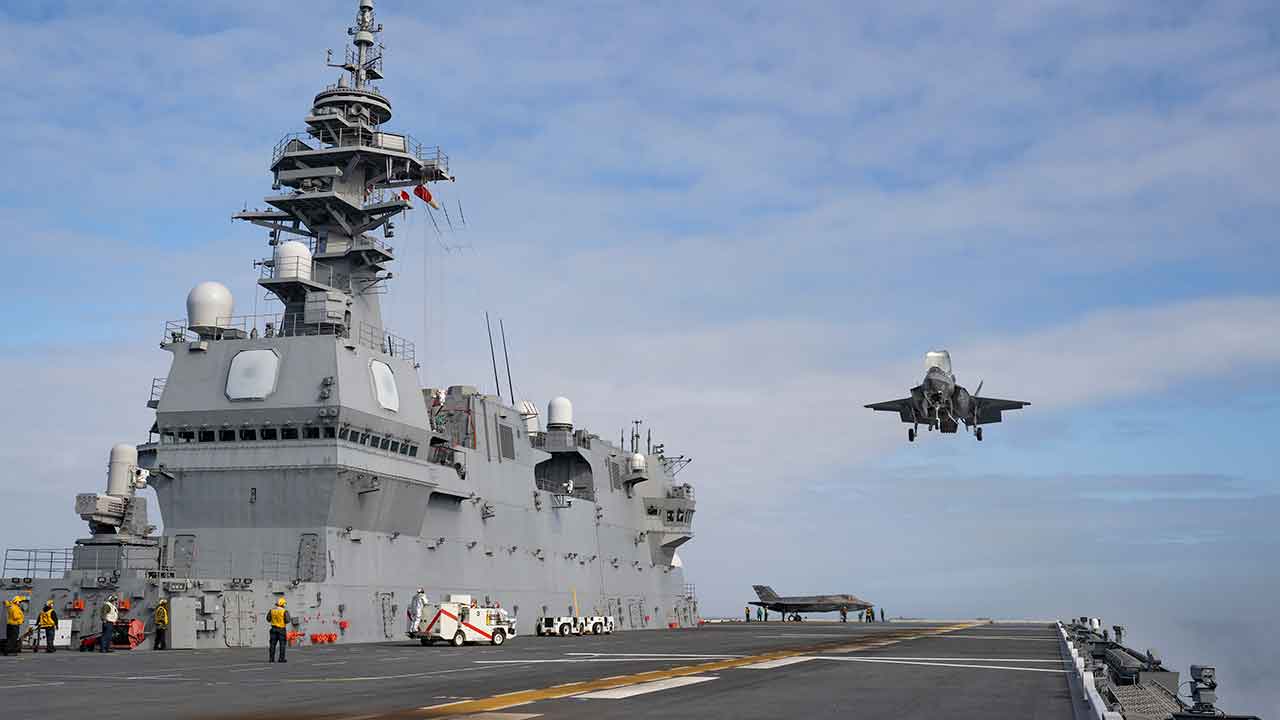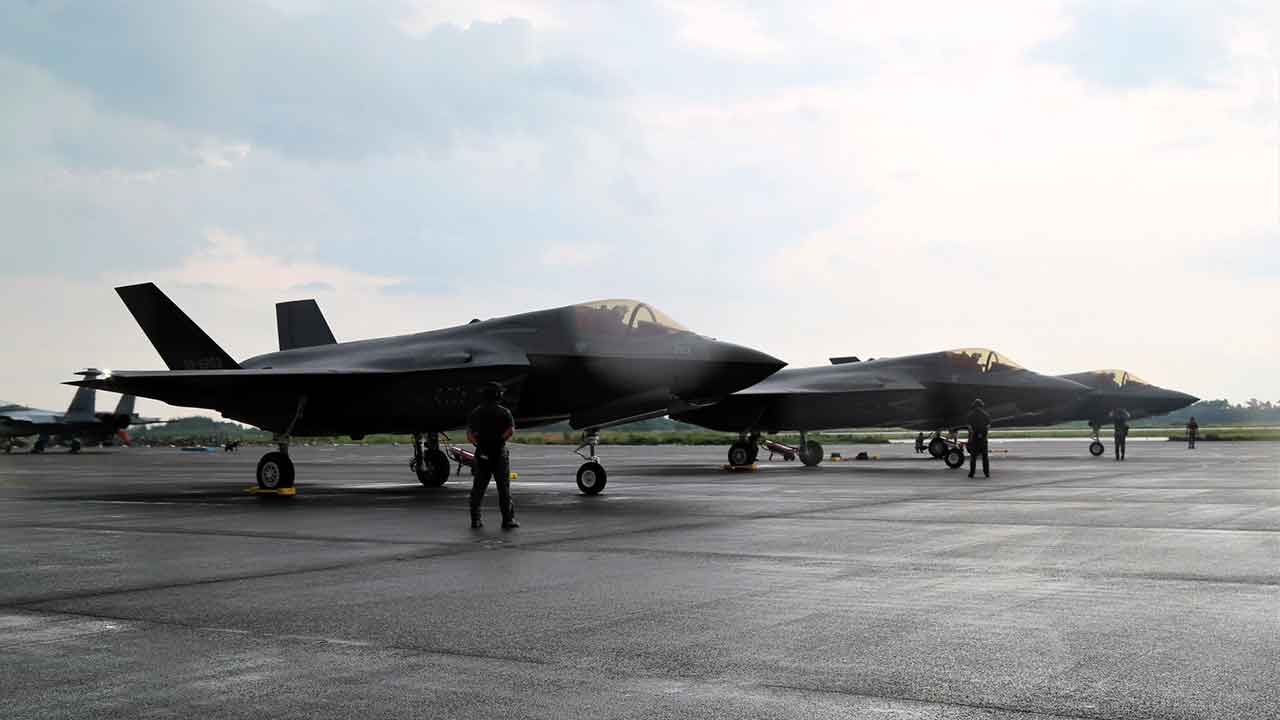Japan took an important step to modernize his maritime skills on Thursday (7th) when it received the first three Tarnkappen fighter aircraft with the F-35B of type and land ability, which will be operated on by helicopter wearers Izumo and Kaga in the future.
+ Vice Defense Minister of VAE tests South Korean fighter jet KF-21 Boramae
The information was announced by the press office of the Japanese Air Association defense forces (JASDF).
The aircraft landed on the Air Force Base Newtabaru in Miyazaki Prefecture. A fourth aircraft from the original delivery remained in the United States for non -mentioned reasons and is to arrive later. According to the Ministry of Defense, four more F-35B will be delivered by March 2026.
Although they officially belong to the Air Force, the F-35B will play a maritime role and are used on board the Izumo and Kaga-ships that Japan officially classifies as “helicopter destroyers”. With the commissioning of these aircraft, however, the ships in fact become light aircraft carriers, even if this term is avoided for political reasons and on the basis of the constitutional interpretation, which restricts the structure of “offensive skills”.
Equipped ships for the future
From the beginning, designed with specifications that go beyond the requirements for helicopters, both ships had hangars, elevators and decks that are suitable for vertical start and landing frames. Although this was never officially explained, the configuration indicated a strategic reserve for the future.
In 2021, the Izumo confirmed its ability to operate aircraft, as successful test landings with an F-35B of the US Marine Corps. Since then, both carriers have been converted: reinforcement of the deck, heat -resistant coating, modernization of the navigation systems and adaptation for the absorption of aviation equipment, such as refueling stations.
Successful sea tests

Between October and November 2024, the Kaga completed integration tests with F-35B fighter aircraft and carried out around 50 landings and starts. The tests included the parking and waiting in the hangar, simultaneous deck operations, night landings, room-air coordination and the control of air traffic in the vicinity of the ship.
In order to increase the operational capacity in all weather conditions, the marine installed the JPALS system on the helicopter wearers-a precision approach system that is used for naval flight companies.
With this delivery, Japan again plays an important role in the carrier air trip and marks a rebirth of the era of Japanese aircraft carriers after decades of absence in this type of ship in the fleet.
Source and pictures: x @jasdf_pao_eng, @Thef35jpo, Militarnyi.com. This content was created with the help of AI and checked by the editorial team.


